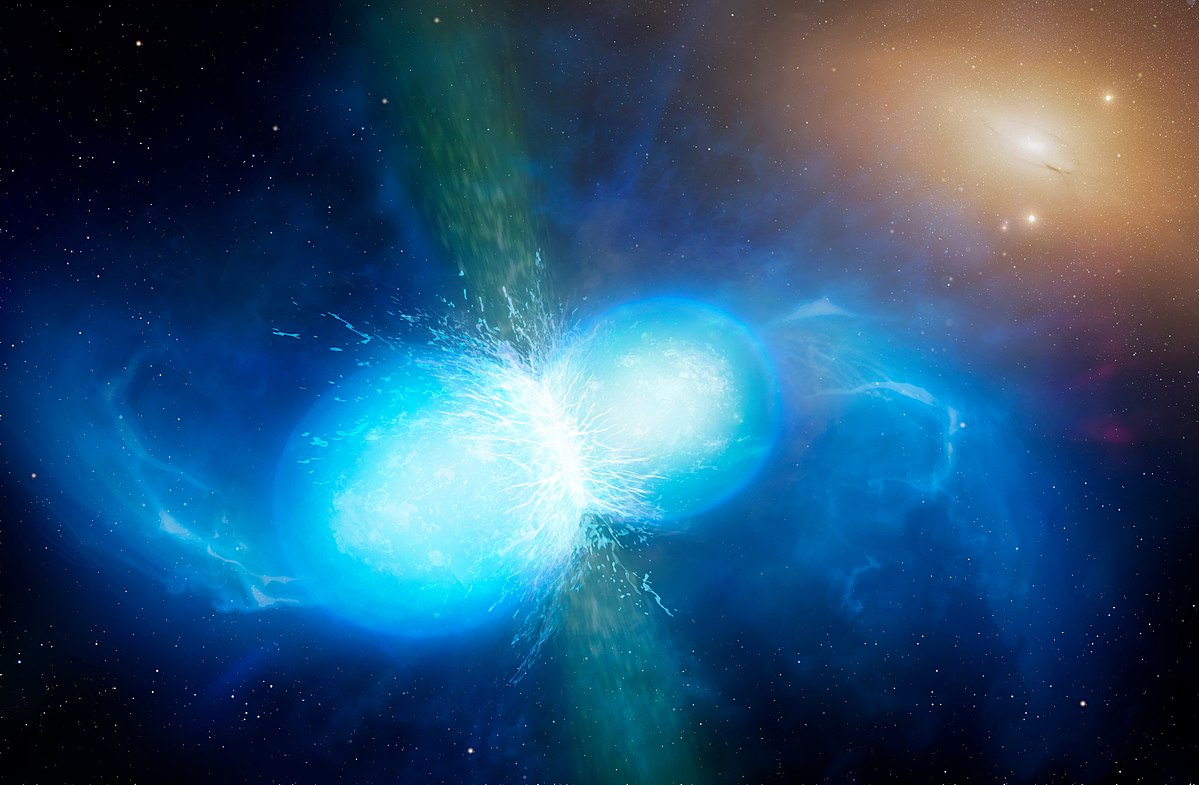Aaron Zimmerman was visiting his brother in Tucson, Arizona, on August 17, when, at 7 a.m., his phone started pinging. Zimmerman, a researcher at the Canadian Institute for Theoretical Astrophysics based at U of T, had subscribed to an alert that would let him know if any of world’s three gravitational wave detectors had something to report.
When his phone sprang to life that morning, he knew that a massive collision somewhere in the universe had created a ripple in space-time.

Bleary-eyed, Zimmerman fired up his computer and prepared for a series of conference calls, as the rest of the household slept. Previous signals of gravitational waves, recorded over the last two years, were thought to have come from colliding black holes. This one seemed different, though. Instead of lasting a few seconds, it persisted for more than a minute and a half – a strong indication that a new type of object had been found.
The most likely culprit was a pair of colliding neutron stars – ultra-dense objects formed in the wake of a supernova explosion. It was possible that a mighty smash of two such stars had released a burst of gravitational waves. But the collision would have also released electromagnetic radiation at many wavelengths – including visible light, which astronomers had a chance of seeing. If they could pull it off, they would be able to see, for the first time, one of the universe’s most violent events; it would also be the first time they’d snagged gravitational waves and light from the same object.

While Zimmerman worked to conclusively identify the object, his colleagues were busy trying to pinpoint its location, so that astronomers could aim their telescopes in the right direction. This task would normally be left to the computers, which would use data from the gravitational wave detectors to generate a sky-map showing where the signal had come from. But on that day, a glitch at one of the detectors prevented the computers from creating the map. This left Zimmerman’s colleagues hastily scribbling new code that would yield the data that the astronomers needed. “Through some really hard work, the map got made and sent out within five or six hours,” he says.
Soon, Maria Drout’s phone was pinging, too. Drout, an astrophysicist at U of T’s Dunlap Institute for Astronomy and Astrophysics, was at the Carnegie Observatories in Pasadena, California, for work when the alerts started coming in. It turned out that the object was located in the southern sky, in the direction of the constellation Hydra; if there was something to see, it could potentially be spotted using the Carnegie-operated telescopes at the Las Campanas Observatory in Chile. Drout spent the rest of the day on Skype, conferring with astronomers in multiple telescope control rooms.
“As soon as the sun set, it was all hands on deck, trying to get things ready as quick as possible,” Drout recalls. She and her colleagues were soon sifting through images taken with three different telescopes at Las Campanas. They were also comparing their images to photos of the same region of the sky from a few months earlier, to look for anything in the new images that wasn’t in the old ones – a task usually done by computer algorithms. But that evening, they found themselves comparing photos by sight. “We went about it ‘old school,’” Drout says.

It was Drout’s colleague, Charles Kilpatrick at the University of California at Santa Cruz, who first spotted the new object – a tiny blip of light in a galaxy known as NGC 4993 – on an image from the Swope telescope at Las Campanas.
By now that pair of images – showing the far-off galaxy before and after the colossal explosion triggered by the neutron star smash-up – has been published hundreds of times. It’s the first direct observation of a collision of neutron stars – and the first time that we’ve recorded both gravitational waves and ordinary light from the same source.
“The first time I saw the Swope image from Maria’s team – that really drove it home,” says Zimmerman. “This is history; this is going to be the image that we talk about – the first sighting of this new object, this transient fireball in the sky.”





